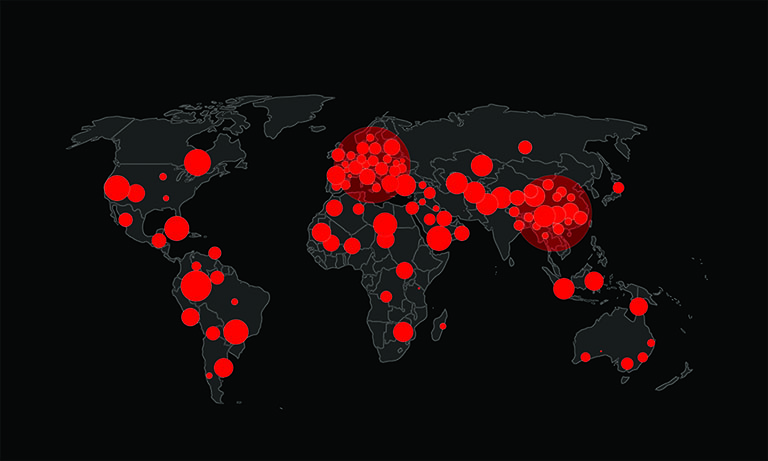TCESB Malware: The Cyber Threat Exploiting Security Software

Another form of malware, codenamed TCESB, has emerged as a significant cyber threat. It leverages vulnerabilities in security software to bypass defenses and execute malicious payloads undetected. Linked to the Chinese-affiliated hacking group ToddyCat, TCESB represents a new evolution in cyber-attack techniques, demonstrating the continuous cat-and-mouse game between threat actors and cybersecurity professionals.
Table of Contents
What is TCESB Malware?
TCESB is a sophisticated malware strain observed being deployed by ToddyCat, a threat group known for its persistent cyber-attacks across Asia. The malware was discovered exploiting a vulnerability in ESET's security software, specifically targeting its Command Line Scanner tool. By using a method called DLL Search Order Hijacking, the attackers replaced a legitimate system library file, "version.dll," with their own malicious version. This allowed them to manipulate the system's execution flow and install the malware covertly.
How Does TCESB Operate?
The attack hinges on exploiting a previously unknown vulnerability tracked as CVE-2024-11859. This flaw permitted attackers, who already possessed administrator privileges, to introduce a compromised DLL file into the system. While this did not allow privilege escalation, it provided a stealthy mechanism for executing unauthorized code.
The malware further enhanced its capabilities by leveraging a well-known attack technique known as "bring your own vulnerable driver" (BYOVD). This involved installing a known vulnerable Dell driver (DBUtilDrv2.sys), which had a privilege escalation flaw (CVE-2021-36276). By exploiting this weakness, TCESB could tamper with the operating system's kernel structures, disabling security monitoring tools and further embedding itself within compromised environments.
Implications of the TCESB Malware
The emergence of TCESB poses several significant concerns for cybersecurity professionals and organizations worldwide:
- Bypassing Security Mechanisms: By targeting security software itself, TCESB highlights the risk that even trusted security tools can be manipulated to facilitate cyber-attacks. This underscores the importance of frequent security updates and vulnerability management.
- Persistent Threats from ToddyCat: ToddyCat's continued operations suggest that they are refining their techniques and expanding their arsenal. Their ability to conduct long-term cyber-espionage operations increases the threat level for organizations in the Asia-Pacific region and beyond.
- Exploitation of Legitimate System Components: TCESB's reliance on modifying existing system files and using vulnerable drivers makes it harder to detect. Security teams need to be vigilant in monitoring for unusual system modifications and driver installations.
- Potential for Industrial-Scale Data Theft: Previous reports on ToddyCat indicate that they engage in large-scale data harvesting. If TCESB is part of a broader attack campaign, it could be used to exfiltrate sensitive data from high-value targets, including government institutions and corporations.
What Has Been Done to Address the Threat?
Upon discovering this vulnerability, ESET moved quickly to address it. A fix was released in late January 2025, updating their security products for Windows to close the loophole. The company emphasized that while the vulnerability allowed attackers to execute malicious code, they would have already needed administrator privileges to exploit it.
Security researchers also recommend proactive monitoring techniques to detect and mitigate similar threats. This includes tracking the installation of known vulnerable drivers, monitoring system events related to Windows kernel debugging, and implementing robust endpoint detection and response (EDR) solutions.
How Organizations Can Protect Themselves
To minimize the risk of TCESB and similar threats, organizations should take the following precautions:
- Regularly Update Security Software: Ensuring that all security tools are updated with the latest patches can prevent attackers from exploiting known vulnerabilities.
- Monitor for Suspicious Activity: IT teams should watch for unusual system modifications, particularly unauthorized DLL changes or unexpected driver installations.
- Employ Advanced Threat Detection Tools: Using behavioral analysis tools can help detect anomalies in system processes that may indicate the presence of malware.
- Implement Least Privilege Policies: Restricting administrative privileges to only essential users reduces the risk of attackers gaining the necessary access to exploit vulnerabilities.
Final Thoughts
The discovery of TCESB malware serves as a stark reminder that cybercriminals continue to find new ways to bypass security measures. Organizations must remain vigilant, continuously update their security defenses, and implement proactive monitoring to detect and mitigate emerging threats. As cybersecurity landscapes evolve, staying one step ahead of attackers is crucial in protecting sensitive data and maintaining robust digital security.








